SAN DIEGO, California – The advocacy of engineers around diversity and inclusion in the science, technology, engineering, and mathematics (STEM) workforce is critical. Familiar with the obstacles girls and young women face when pursuing interests in STEM fields, Karibia Baillargeon, a female bridge engineer from an immigrant family, is intent on tearing down these obstacles to increase diversity and the voice of women in engineering. Raised in a family with strong cultural ties to their native country, strict expectations were placed on Karibia to excel in school and go to college. However, when she chose to pursue a degree in medicine, her family was slightly taken aback – to them, it was not a field that women typically entered. Plus, her mother was concerned about paying for such a career on her single-parent income and what that would mean for the education of Karibia’s younger siblings. After realizing her passion was not in medicine, Karibia switched her degree to engineering, bewildering her family even more, as they could not understand why she would choose to go into “a field that was for men.” As she continued to pursue her degree, she was aware of the lack of support, not just from her family who had a difficult time relating to her career choice, but also in her classes and internships that were male dominated and lacked women role models. “Sometimes it doesn’t matter how ambitious you are,” explained Karibia. “You may have all the ambition and smarts in the world, but when you aren’t receiving support and encouragement, and you can’t relate to anyone physically or culturally, you begin to wonder – am I supposed to be here? Do I really belong in this field and can I make it?”
Raised in a family with strong cultural ties to their native country, strict expectations were placed on Karibia to excel in school and go to college. However, when she chose to pursue a degree in medicine, her family was slightly taken aback – to them, it was not a field that women typically entered. Plus, her mother was concerned about paying for such a career on her single-parent income and what that would mean for the education of Karibia’s younger siblings. After realizing her passion was not in medicine, Karibia switched her degree to engineering, bewildering her family even more, as they could not understand why she would choose to go into “a field that was for men.” As she continued to pursue her degree, she was aware of the lack of support, not just from her family who had a difficult time relating to her career choice, but also in her classes and internships that were male dominated and lacked women role models. “Sometimes it doesn’t matter how ambitious you are,” explained Karibia. “You may have all the ambition and smarts in the world, but when you aren’t receiving support and encouragement, and you can’t relate to anyone physically or culturally, you begin to wonder – am I supposed to be here? Do I really belong in this field and can I make it?”
 Fortunately for Karibia, she learned about ASCE and WTS while at SDSU and started to attend their meetings. After listening to speeches given by women engineers, some who were minorities, and hearing their stories, as well as hearing from men who offered their support and mentorship, Karibia realized that there were women who were successfully building careers in engineering and they belonged in the industry just as much as men did.
Fortunately for Karibia, she learned about ASCE and WTS while at SDSU and started to attend their meetings. After listening to speeches given by women engineers, some who were minorities, and hearing their stories, as well as hearing from men who offered their support and mentorship, Karibia realized that there were women who were successfully building careers in engineering and they belonged in the industry just as much as men did.
Upon graduating, Karibia entered the workforce as a civil engineer. Now ten years into her career, she places significant importance on being an advocate for participation of girls and young women in STEM fields. Recognizing that encouraging girls to pursue STEM classes and activities at a young age is a vital first step to creating a pipeline for a diverse and competitive workforce. Karibia, working through various organizations, has participated in Introduce a Girl to Engineering Day for the past five years. This has involved working with Girl Scout troops to organize and lead hands-on engineering related activities, like building wooden bridges and catapults to free a pretend queen from a castle or engineering a bridge out of candy and seeing how it collapses on the mini-shake table.
 Working through the University of California San Diego (UCSD), Karibia participates in Tech Trek, a summer science and math camp designed to develop interest, excitement, and self-confidence in 13-year-old girls who will enter eighth grade in the fall. In addition to facilitating engineering activities and projects, Karibia serves as a resource for the girls to ask questions about her journey to becoming an engineer and what it’s like to be an engineer in a field dominated by men. “The forethought these middle school students have can surprise you,” said Karibia. “They have questions related to working as an engineer and still being able to have a family, as well as questions related to being able to afford college and how to make themselves heard when they’re the only girl on a project or in a classroom. Sometimes the questions are just silly – do you wear lip-gloss to work?” Coordinating with a colleague, who is an ACE Mentor, Karibia also visits high school engineering clubs to educate students about the field of engineering, share her experiences, answer questions, and provide guidance on coursework and applying for scholarships. Karibia has taken her mission across the border into Mexico to a Catholic orphanage, several disenfranchised rural communities, and even her own extended family. So far, she’s convinced the head nun at the orphanage to hold STEM activities for the girls and swayed two of her cousins to graduate as civil engineers and one female cousin as an architect.
Working through the University of California San Diego (UCSD), Karibia participates in Tech Trek, a summer science and math camp designed to develop interest, excitement, and self-confidence in 13-year-old girls who will enter eighth grade in the fall. In addition to facilitating engineering activities and projects, Karibia serves as a resource for the girls to ask questions about her journey to becoming an engineer and what it’s like to be an engineer in a field dominated by men. “The forethought these middle school students have can surprise you,” said Karibia. “They have questions related to working as an engineer and still being able to have a family, as well as questions related to being able to afford college and how to make themselves heard when they’re the only girl on a project or in a classroom. Sometimes the questions are just silly – do you wear lip-gloss to work?” Coordinating with a colleague, who is an ACE Mentor, Karibia also visits high school engineering clubs to educate students about the field of engineering, share her experiences, answer questions, and provide guidance on coursework and applying for scholarships. Karibia has taken her mission across the border into Mexico to a Catholic orphanage, several disenfranchised rural communities, and even her own extended family. So far, she’s convinced the head nun at the orphanage to hold STEM activities for the girls and swayed two of her cousins to graduate as civil engineers and one female cousin as an architect.
 In addition to serving as a mentor and resource for girls and young women, Karibia reaches out to families from disadvantaged communities. Attending social and cultural events at a local community center, Karibia talks to parents about the opportunities available to women in the engineering field and the importance of encouraging their daughters’ interests in math and science, and provides information on free STEM activities and programs that are available for kids. 19% of bachelor’s degrees in engineering are awarded to women; when you factor in the percentage of those degrees that were awarded to minority women, the number drops to 10%. “What discourages women from pursuing careers in engineering isn’t ability, it’s often cultural and intangible. Change needs to be sparked at many levels, and for minority groups, an important first step is with the family at home,” commented Karibia.
In addition to serving as a mentor and resource for girls and young women, Karibia reaches out to families from disadvantaged communities. Attending social and cultural events at a local community center, Karibia talks to parents about the opportunities available to women in the engineering field and the importance of encouraging their daughters’ interests in math and science, and provides information on free STEM activities and programs that are available for kids. 19% of bachelor’s degrees in engineering are awarded to women; when you factor in the percentage of those degrees that were awarded to minority women, the number drops to 10%. “What discourages women from pursuing careers in engineering isn’t ability, it’s often cultural and intangible. Change needs to be sparked at many levels, and for minority groups, an important first step is with the family at home,” commented Karibia.
The reasons so few women enter the engineering field are varied; however, it’s clear that support and encouragement for girls and young women are vital to making a change. Girls often lack mentors who can help them identify with STEM careers and believe they are attainable. This cycle perpetuates the underrepresentation of women in STEM. “They need real-life role models they can look at and hear their stories of how they got to where they are. This makes success in STEM fields more tangible and within reach,” explained Karibia. “As a woman in the engineering industry, it’s my job to provide education and mentorship that will help get more women into the Architecture Engineering and Construction (AEC) industry.”
Kleinfelder is proud to recognize Karibia as an agent of change within the community. Her passion and commitment to helping women succeed in engineering, science and math fields not only sets the AEC industry up for a brighter and more diverse future, but also helps positively transform our broader community.
Kleinfelder. Bright People. Right Solutions. Founded in 1961, Kleinfelder is a leading engineering, design, construction management, construction materials inspection and testing, and environmental professional services firm. Kleinfelder now employs more than 2,200 professionals and operates from over 75 office locations in the United States, Canada, and Australia. The company is headquartered in San Diego, California. Poised for growth, Kleinfelder continues to provide high-quality solutions for our diverse client base. Visit Kleinfelder.com or follow us on LinkedIn/Kleinfelder.
 In the spirit of World Environment Day, and in an effort to contribute to companywide sustainability goals, Kleinfelder is taking a stand against plastic consumption through the use of reusable water bottles in our offices and labs, and in the field at project sites. By equipping staff with reusable water bottles, Kleinfelder hopes to Beat Plastic Pollution by eliminating waste from disposable plastic water bottles. “We are committed to better managing our resource consumption as a firm; an obvious first step for us was to reduce our plastic consumption and waste,” explained Louis Armstrong, Kleinfelder West Division Director. “We’re excited to engage our employees and give them the opportunity to beat plastic pollution and contribute to achieving the company’s sustainability goals through the use of Kleinfelder reusable water bottles.”
In the spirit of World Environment Day, and in an effort to contribute to companywide sustainability goals, Kleinfelder is taking a stand against plastic consumption through the use of reusable water bottles in our offices and labs, and in the field at project sites. By equipping staff with reusable water bottles, Kleinfelder hopes to Beat Plastic Pollution by eliminating waste from disposable plastic water bottles. “We are committed to better managing our resource consumption as a firm; an obvious first step for us was to reduce our plastic consumption and waste,” explained Louis Armstrong, Kleinfelder West Division Director. “We’re excited to engage our employees and give them the opportunity to beat plastic pollution and contribute to achieving the company’s sustainability goals through the use of Kleinfelder reusable water bottles.”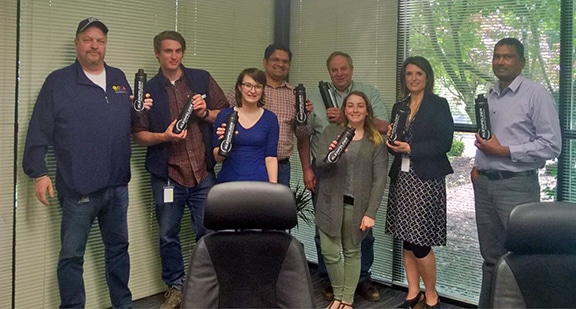


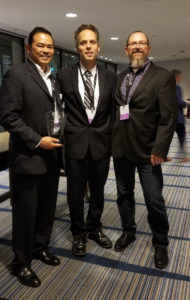 The first place award, presented at the Annual Awards & Scholarship Gala on May 17, 2018, recognizes the construction efforts for the Caltrain Los Gatos Creek Bridge Project. Receipt of this award places the project on the list of eligible projects for the National Achievement Award.
The first place award, presented at the Annual Awards & Scholarship Gala on May 17, 2018, recognizes the construction efforts for the Caltrain Los Gatos Creek Bridge Project. Receipt of this award places the project on the list of eligible projects for the National Achievement Award. Kleinfelder provided source inspections during girder fabrication in Antioch; welding and coatings inspections for permanent steel column casings fabricated in Washington; and welded hoops identification, sampling, and lab testing. In the field, our Roadway Worker Protection (RWP) trained field inspectors worked seamlessly with our CM and Owner Teams to sample and test structural foundation system concrete for the bridge bents, abutments, and retaining walls. We provided earthwork, aggregates, HMA, and Ballast sampling and testing. Kleinfelder’s scope was completed with zero recordable accidents or injuries to our staff. All construction activities were performed during live daytime track windows between trains, or at night while unrestricted access to the alignment was available.
Kleinfelder provided source inspections during girder fabrication in Antioch; welding and coatings inspections for permanent steel column casings fabricated in Washington; and welded hoops identification, sampling, and lab testing. In the field, our Roadway Worker Protection (RWP) trained field inspectors worked seamlessly with our CM and Owner Teams to sample and test structural foundation system concrete for the bridge bents, abutments, and retaining walls. We provided earthwork, aggregates, HMA, and Ballast sampling and testing. Kleinfelder’s scope was completed with zero recordable accidents or injuries to our staff. All construction activities were performed during live daytime track windows between trains, or at night while unrestricted access to the alignment was available.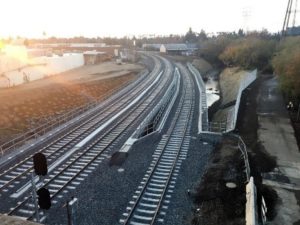 Kleinfelder leveraged staff from our Oakland, Pleasanton, Hayward, and Pittsburg offices to complete the project on time and under authorized fee. “This was a great Team effort that I’m proud to have managed,” said Chris McCarty, Kleinfelder Project Manager. “Our success is a direct result of each team member’s hard work and expertise, which allows us to remain at the forefront of our industry.”
Kleinfelder leveraged staff from our Oakland, Pleasanton, Hayward, and Pittsburg offices to complete the project on time and under authorized fee. “This was a great Team effort that I’m proud to have managed,” said Chris McCarty, Kleinfelder Project Manager. “Our success is a direct result of each team member’s hard work and expertise, which allows us to remain at the forefront of our industry.” As part of the field trip, Vulcan employees gave the students a tour of the operations onsite. Kleinfelder employees helped the students with a variety of activities including sand art; digging for fossils from the relict beach dunes; and learning about the importance of sand and aggregate materials in everyday life.
As part of the field trip, Vulcan employees gave the students a tour of the operations onsite. Kleinfelder employees helped the students with a variety of activities including sand art; digging for fossils from the relict beach dunes; and learning about the importance of sand and aggregate materials in everyday life.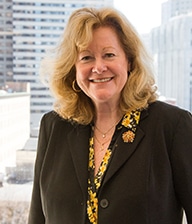 With over 30 years of transportation experience in both the public and private sectors, Margaret promotes the key to successful leadership as effective communication and passion. She has demonstrated these traits within her diverse background spanning technical, operations, project management, client service, and business development disciplines.
With over 30 years of transportation experience in both the public and private sectors, Margaret promotes the key to successful leadership as effective communication and passion. She has demonstrated these traits within her diverse background spanning technical, operations, project management, client service, and business development disciplines. With 20 years of experience working across multiple disciplines of engineering and environmental consulting, Andrew is well versed in the planning, design, construction, and management of infrastructure. Having recently managed a $23 million asset program, he helped numerous local government clients find cost-effective solutions to collect, manage, analyze, and model data critical to their infrastructure. His successful track record delivering projects is marked by progressive ideas and strategies that deliver in innovative ways while being in line with true client expectations.
With 20 years of experience working across multiple disciplines of engineering and environmental consulting, Andrew is well versed in the planning, design, construction, and management of infrastructure. Having recently managed a $23 million asset program, he helped numerous local government clients find cost-effective solutions to collect, manage, analyze, and model data critical to their infrastructure. His successful track record delivering projects is marked by progressive ideas and strategies that deliver in innovative ways while being in line with true client expectations. Raised in a family with strong cultural ties to their native country, strict expectations were placed on Karibia to excel in school and go to college. However, when she chose to pursue a degree in medicine, her family was slightly taken aback – to them, it was not a field that women typically entered. Plus, her mother was concerned about paying for such a career on her single-parent income and what that would mean for the education of Karibia’s younger siblings. After realizing her passion was not in medicine, Karibia switched her degree to engineering, bewildering her family even more, as they could not understand why she would choose to go into “a field that was for men.” As she continued to pursue her degree, she was aware of the lack of support, not just from her family who had a difficult time relating to her career choice, but also in her classes and internships that were male dominated and lacked women role models. “Sometimes it doesn’t matter how ambitious you are,” explained Karibia. “You may have all the ambition and smarts in the world, but when you aren’t receiving support and encouragement, and you can’t relate to anyone physically or culturally, you begin to wonder – am I supposed to be here? Do I really belong in this field and can I make it?”
Raised in a family with strong cultural ties to their native country, strict expectations were placed on Karibia to excel in school and go to college. However, when she chose to pursue a degree in medicine, her family was slightly taken aback – to them, it was not a field that women typically entered. Plus, her mother was concerned about paying for such a career on her single-parent income and what that would mean for the education of Karibia’s younger siblings. After realizing her passion was not in medicine, Karibia switched her degree to engineering, bewildering her family even more, as they could not understand why she would choose to go into “a field that was for men.” As she continued to pursue her degree, she was aware of the lack of support, not just from her family who had a difficult time relating to her career choice, but also in her classes and internships that were male dominated and lacked women role models. “Sometimes it doesn’t matter how ambitious you are,” explained Karibia. “You may have all the ambition and smarts in the world, but when you aren’t receiving support and encouragement, and you can’t relate to anyone physically or culturally, you begin to wonder – am I supposed to be here? Do I really belong in this field and can I make it?” Fortunately for Karibia, she learned about ASCE and WTS while at SDSU and started to attend their meetings. After listening to speeches given by women engineers, some who were minorities, and hearing their stories, as well as hearing from men who offered their support and mentorship, Karibia realized that there were women who were successfully building careers in engineering and they belonged in the industry just as much as men did.
Fortunately for Karibia, she learned about ASCE and WTS while at SDSU and started to attend their meetings. After listening to speeches given by women engineers, some who were minorities, and hearing their stories, as well as hearing from men who offered their support and mentorship, Karibia realized that there were women who were successfully building careers in engineering and they belonged in the industry just as much as men did. Working through the University of California San Diego (UCSD), Karibia participates in Tech Trek, a summer science and math camp designed to develop interest, excitement, and self-confidence in 13-year-old girls who will enter eighth grade in the fall. In addition to facilitating engineering activities and projects, Karibia serves as a resource for the girls to ask questions about her journey to becoming an engineer and what it’s like to be an engineer in a field dominated by men. “The forethought these middle school students have can surprise you,” said Karibia. “They have questions related to working as an engineer and still being able to have a family, as well as questions related to being able to afford college and how to make themselves heard when they’re the only girl on a project or in a classroom. Sometimes the questions are just silly – do you wear lip-gloss to work?” Coordinating with a colleague, who is an ACE Mentor, Karibia also visits high school engineering clubs to educate students about the field of engineering, share her experiences, answer questions, and provide guidance on coursework and applying for scholarships. Karibia has taken her mission across the border into Mexico to a Catholic orphanage, several disenfranchised rural communities, and even her own extended family. So far, she’s convinced the head nun at the orphanage to hold STEM activities for the girls and swayed two of her cousins to graduate as civil engineers and one female cousin as an architect.
Working through the University of California San Diego (UCSD), Karibia participates in Tech Trek, a summer science and math camp designed to develop interest, excitement, and self-confidence in 13-year-old girls who will enter eighth grade in the fall. In addition to facilitating engineering activities and projects, Karibia serves as a resource for the girls to ask questions about her journey to becoming an engineer and what it’s like to be an engineer in a field dominated by men. “The forethought these middle school students have can surprise you,” said Karibia. “They have questions related to working as an engineer and still being able to have a family, as well as questions related to being able to afford college and how to make themselves heard when they’re the only girl on a project or in a classroom. Sometimes the questions are just silly – do you wear lip-gloss to work?” Coordinating with a colleague, who is an ACE Mentor, Karibia also visits high school engineering clubs to educate students about the field of engineering, share her experiences, answer questions, and provide guidance on coursework and applying for scholarships. Karibia has taken her mission across the border into Mexico to a Catholic orphanage, several disenfranchised rural communities, and even her own extended family. So far, she’s convinced the head nun at the orphanage to hold STEM activities for the girls and swayed two of her cousins to graduate as civil engineers and one female cousin as an architect. In addition to serving as a mentor and resource for girls and young women, Karibia reaches out to families from disadvantaged communities. Attending social and cultural events at a local community center, Karibia talks to parents about the opportunities available to women in the engineering field and the importance of encouraging their daughters’ interests in math and science, and provides information on free STEM activities and programs that are available for kids. 19% of bachelor’s degrees in engineering are awarded to women; when you factor in the percentage of those degrees that were awarded to minority women, the number drops to 10%. “What discourages women from pursuing careers in engineering isn’t ability, it’s often cultural and intangible. Change needs to be sparked at many levels, and for minority groups, an important first step is with the family at home,” commented Karibia.
In addition to serving as a mentor and resource for girls and young women, Karibia reaches out to families from disadvantaged communities. Attending social and cultural events at a local community center, Karibia talks to parents about the opportunities available to women in the engineering field and the importance of encouraging their daughters’ interests in math and science, and provides information on free STEM activities and programs that are available for kids. 19% of bachelor’s degrees in engineering are awarded to women; when you factor in the percentage of those degrees that were awarded to minority women, the number drops to 10%. “What discourages women from pursuing careers in engineering isn’t ability, it’s often cultural and intangible. Change needs to be sparked at many levels, and for minority groups, an important first step is with the family at home,” commented Karibia. The $1.1 billion Blue Line Extension is the largest infrastructure project in Charlotte’s history. After nearly five years of construction, the Blue Line Extension developed 11 new stations and 9.3 miles of light-rail that runs from the 7th Street Station in the Center City area to the University of North Carolina at Charlotte campus.
The $1.1 billion Blue Line Extension is the largest infrastructure project in Charlotte’s history. After nearly five years of construction, the Blue Line Extension developed 11 new stations and 9.3 miles of light-rail that runs from the 7th Street Station in the Center City area to the University of North Carolina at Charlotte campus.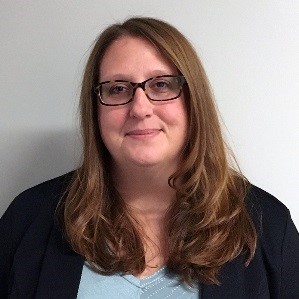 Kleinfelder places significant value on helping women thrive in their careers and continues to make progress every day in supporting the advancement of women in our firm. Important to this progress is recognizing and celebrating the achievements of those women who have contributed to Kleinfelder’s success over the years. Virginia Moore, of a newly formed Kleinfelder Texas field office, has been recognized for boldly pushing her efforts to new levels in support of achieving company-wide goals, while building her career and gaining a competitive edge along the way.
Kleinfelder places significant value on helping women thrive in their careers and continues to make progress every day in supporting the advancement of women in our firm. Important to this progress is recognizing and celebrating the achievements of those women who have contributed to Kleinfelder’s success over the years. Virginia Moore, of a newly formed Kleinfelder Texas field office, has been recognized for boldly pushing her efforts to new levels in support of achieving company-wide goals, while building her career and gaining a competitive edge along the way. It has been very rewarding to see the Kleinfelder Women’s Network evolve over its three-year history. In that time, we have held several educational and social gatherings across the company, consulted with senior management on gender issues, and received great support in our efforts to be an inclusive community. We have accomplished this with strong program leadership and executive sponsors who were committed to the network’s success. This past year, we developed a strong purpose statement to guide our activities, we better utilized our network leadership to provide local and division-wide events that are significant to that location, and we continue to share ideas and feedback with our executive sponsors and one another.
It has been very rewarding to see the Kleinfelder Women’s Network evolve over its three-year history. In that time, we have held several educational and social gatherings across the company, consulted with senior management on gender issues, and received great support in our efforts to be an inclusive community. We have accomplished this with strong program leadership and executive sponsors who were committed to the network’s success. This past year, we developed a strong purpose statement to guide our activities, we better utilized our network leadership to provide local and division-wide events that are significant to that location, and we continue to share ideas and feedback with our executive sponsors and one another.